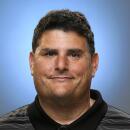BREA : Marrow Gift Gives Donor Special Link
Although he spends much of his time at Brea Community Hospital in front of a computer screen crunching numbers, Wayne Stuckey has always taken pride in working at a place that saves lives.
But earlier this summer, the concept of helping a stranger in need took on new meaning when the 35-year-old computer analyst donated his bone marrow to a leukemia patient.
Now, Stuckey is waiting for word on whether the marrow transplant was a success.
“I’ve always believed in the value of doing good for other people. That’s why I went to work for a hospital,” Stuckey said. “It was either that or going to work in aerospace. I’m kind of opposed to blowing people up.”
Stuckey is the first hospital employee to donate marrow.
He was tested along with more than 100 other employees three years ago as part of a campaign to find a match for two local teen-agers with leukemia.
No matches from the hospital were found for the teen-agers, but in mid-July, doctors discovered similarities between Stuckey’s tissue and that of a 46-year-old cancer patient.
“It’s like finding a needle in a haystack or winning the lottery,” said Julie Greenway, donor coordinator for the Red Cross Bone Marrow Program in Los Angeles.
The chances of a match are from one in 20,000 to one in 100,000, she said.
A match usually requires that the donor and patient share six key antigens, which is rare considering all the different possible tissue combination, Greenway said.
Matches are usually found between people of the same sex and ethnic group. Often, the donor and patient also share similar facial features, hair and eye color.
“It’s like finding someone genetically like you but not related to you,” Greenway added.
Stuckey will have to wait until next summer before he can learn anything about the man who received his bone marrow.
National Marrow Donor Program rules require that the patient’s identity remain secret for 12 months, when doctors can know with some certainty if the transplant worked.
“If he’s interested, I’d be willing to talk with him when the time comes,” he said. “I’m still not sure exactly what I’d say to him.”
The marrow-extraction procedure itself required a two-night stay at the UCLA Medical Center.
Doctors made a small cut into Stuckey’s pelvic area and drew about two liters of the jelly-like marrow from his bone with a needle the size of a drinking straw.
It will take up to four weeks for the body to replenish the marrow, Greenway said.
Stuckey, who entered the hospital on a Wednesday and was back at work the following Monday, said he never thought twice about making the donation.
“Once they told me, I was pretty committed. I wanted to do it,” Stuckey said.
He’s back into his routine of compiling financial reports and creating new programs now but admits a certain anxiety about his mystery patient’s future.
“It’s strange because there’s a part of me in someone else. . . . But I still feel some distance,” Stuckey said.
“I’m waiting to see if it works. Right now, I feel like I might have done some good.”
More to Read
Sign up for Essential California
The most important California stories and recommendations in your inbox every morning.
You may occasionally receive promotional content from the Los Angeles Times.











